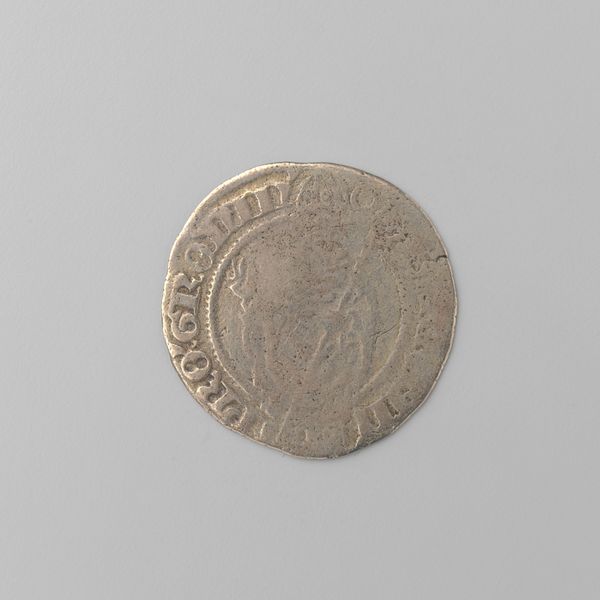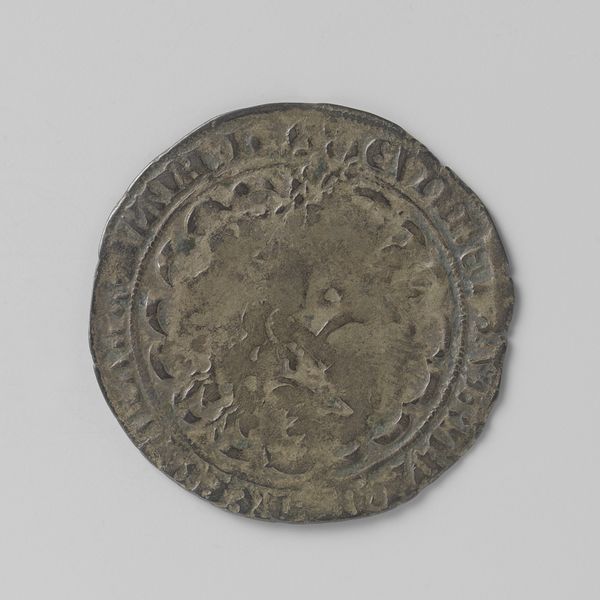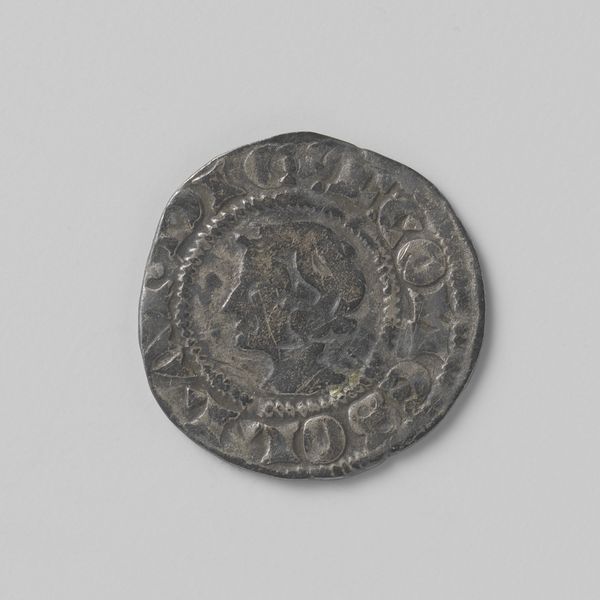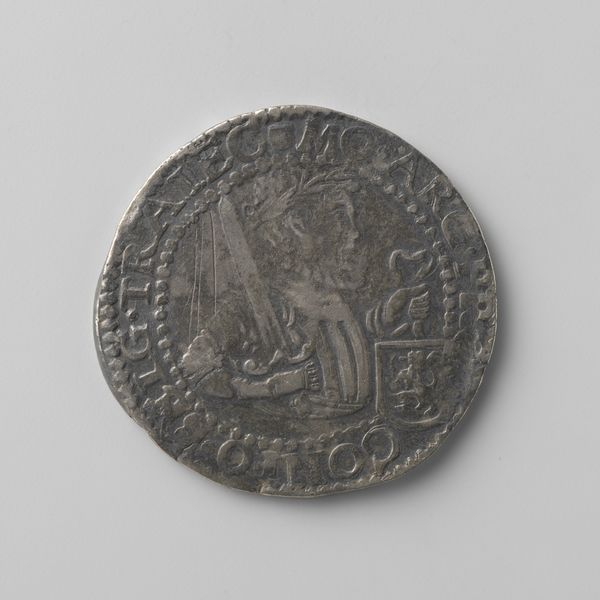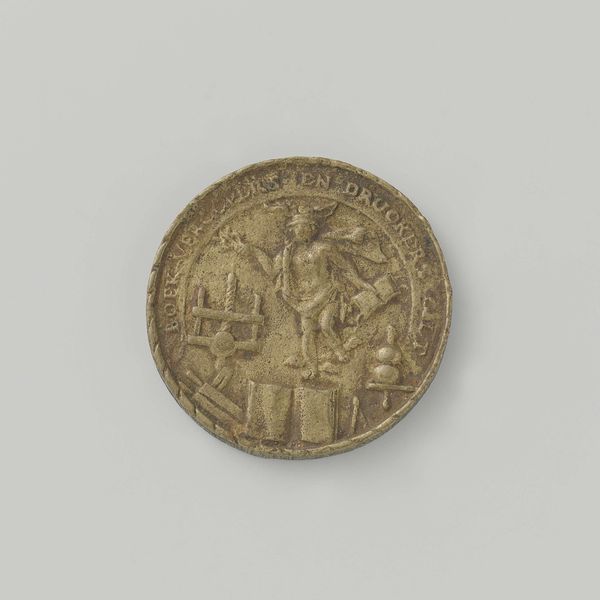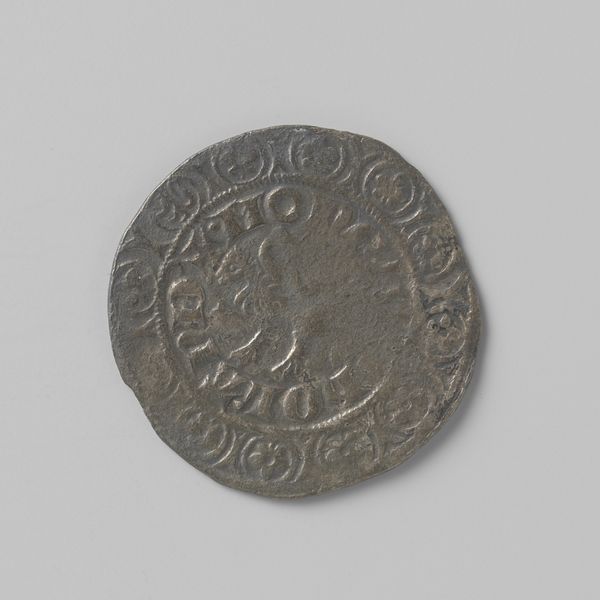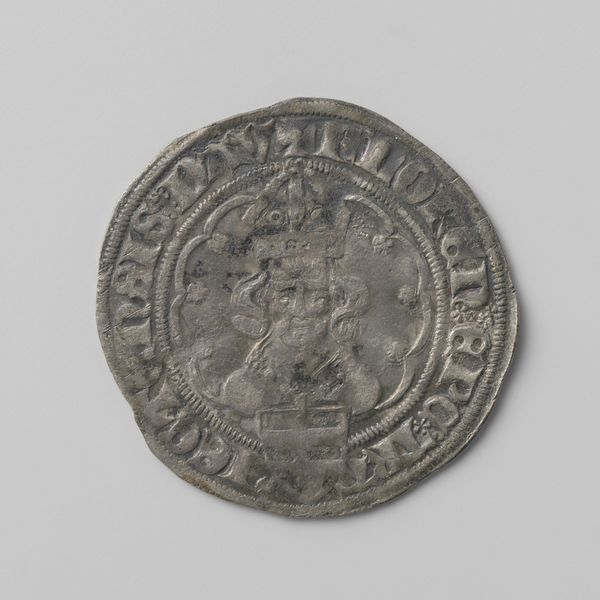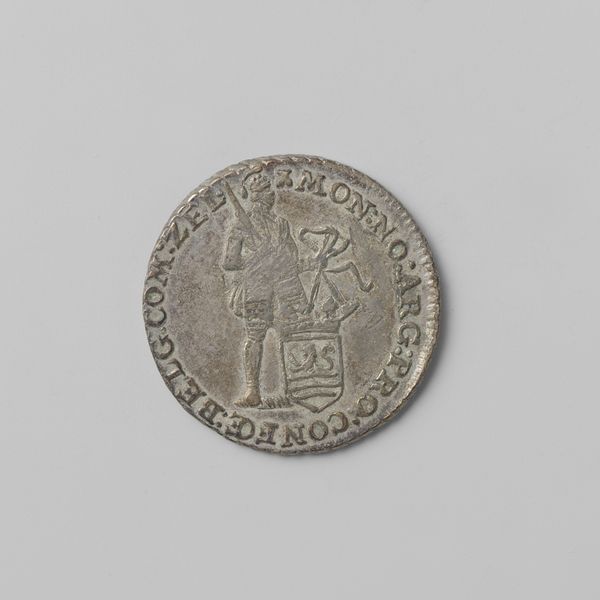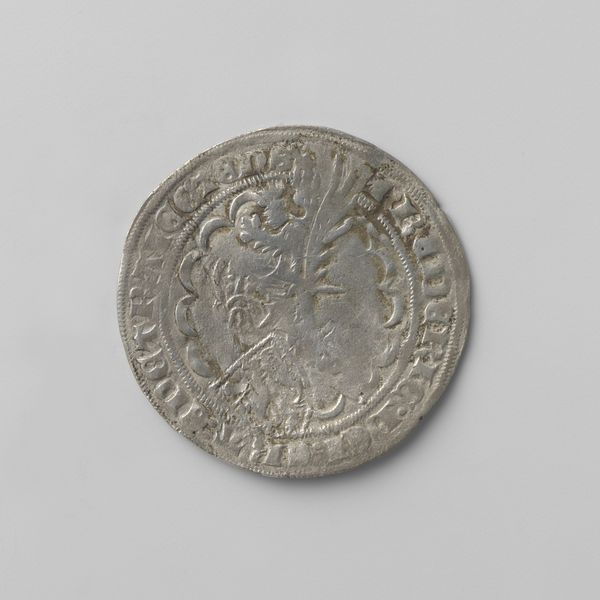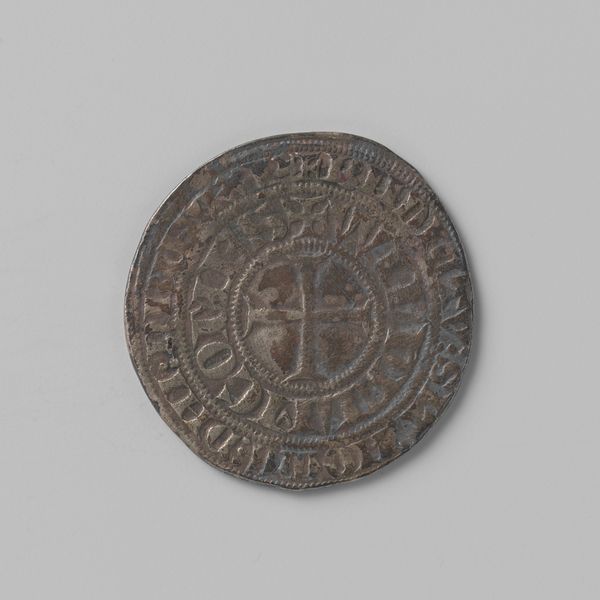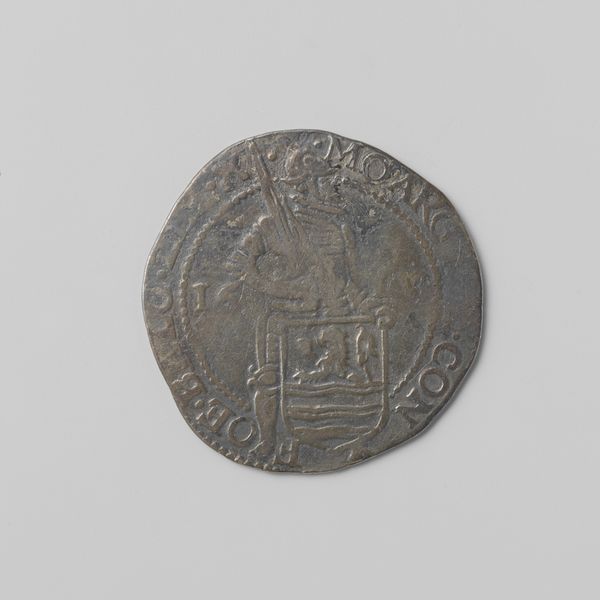
carving, metal, relief, sculpture
#
portrait
#
carving
#
baroque
#
metal
#
relief
#
sculpture
#
statue
Dimensions: diameter 4.9 cm, weight 53.97 gr
Copyright: Rijks Museum: Open Domain
Curator: The artifact before us is a guild badge, a piece dating back to 1718. Specifically, it belonged to the Bontwerkers- en Pruikmakersgilde, which translates to the Furriers' and Wigmakers' Guild of Middelburg. Editor: My immediate reaction is a sense of contained importance. The circular form, the weighty material, it speaks of formalized social structures and perhaps a desire for recognition and legitimacy. Curator: Indeed. Guilds were essential socio-economic entities. These badges acted as markers of membership, status, and a promise of quality within their trade. This badge, given the number 13 engraved, seems to be assigned to the individual. Editor: Number thirteen! An interesting numerical assignment—though its specific meaning is now lost to time, I imagine it held personal significance to its wearer. What about the portrait, does that carry a weight of symbol? Curator: Absolutely, the central portrait almost certainly represents a prominent figure connected to the guild, very likely a high-ranking official within the Wigmakers' and Furriers' society. Portraiture, even on this small scale, conveyed power and prestige in the Baroque era. This highlights that the guilds wanted to attach their organization to noble ideas. Editor: And what about the choice of a bust? I mean the statue. Curator: The selection of a bust portrait focuses attention on the face and shoulders. It brings an accessibility to the persona; it captures the essence of an individual to make their presence familiar. It shows their ability to reason over anything else and helps the wearer emulate it. Editor: The inscription is hard to decipher, but its function is undeniable, a verbal frame cementing the image’s purpose. A declaration of belonging and belief, repeated every time the badge was worn or displayed. What material would that badge be made from? Curator: The badge's specific metallic composition is unknown, though its coloration and sheen imply likely use of brass. Such materials afforded durability, appropriate for objects expected to survive years, and in many instances to act as heirlooms in perpetuum, beyond one’s lifetime. Editor: I'm struck by the way such a small object speaks to the larger history of trade, identity, and visual representation, such as in guild systems shaping society through their control and regulation of profession. A tiny window into a world of wigmakers and furriers asserting their place in society. Curator: Precisely. And reminds us that even mundane objects were bound within intricate networks of socio-political meanings.
Comments
No comments
Be the first to comment and join the conversation on the ultimate creative platform.
